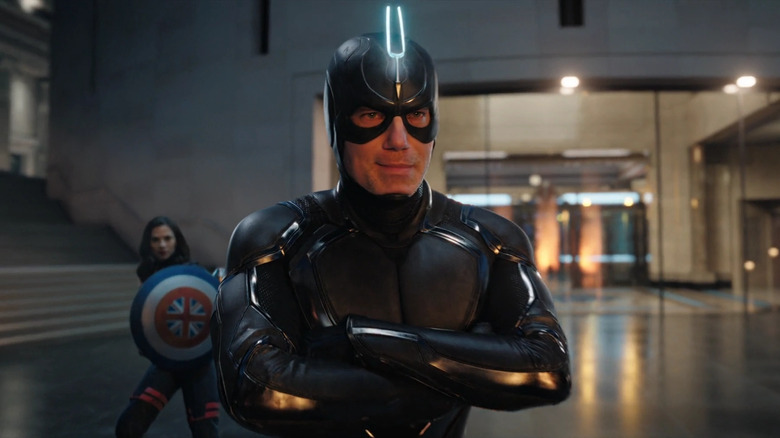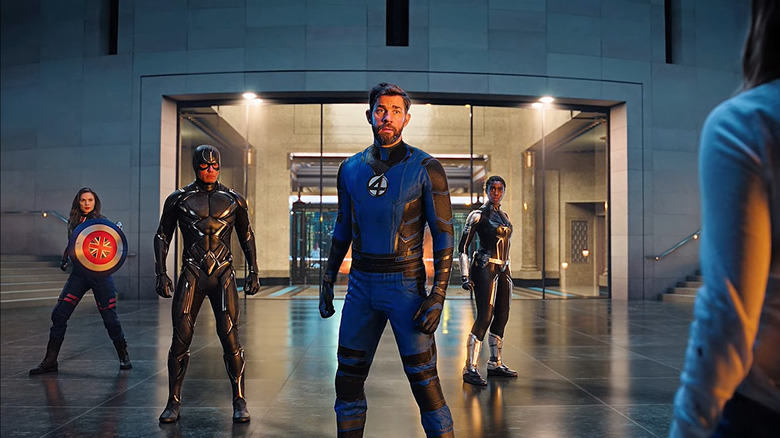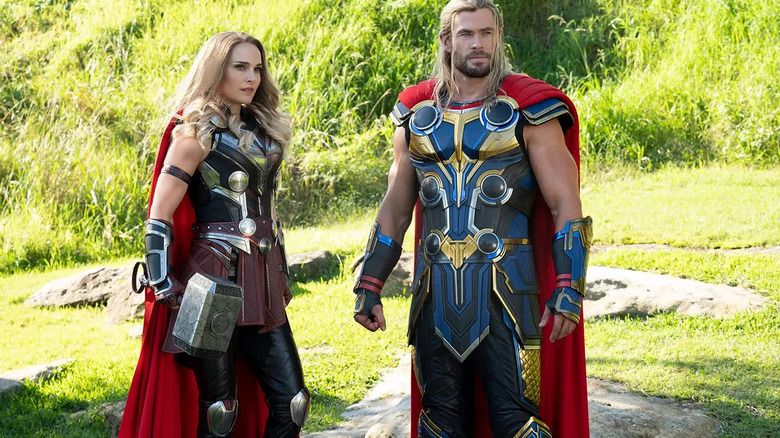Anson Mount Was In 'Disbelief' When He Saw Black Bolt's Multiverse Of Madness Scene
"Doctor Strange and the Multiverse of Madness" can be best described as Sam Raimi at war with the corporate sensibilities of the MCU. On one hand, the movie is filled with fun, creative bits of Raimi-style high-effort filmmaking; there's a willingness to get spooky and mean in a way that feels fresh and unprecedented for the franchise. On the other hand, it's filled with forced moments that read so strongly as studio notes designed to pander to fans and set up future movies. Case in point: The Illuminati, a new group that includes John Krasinski's Reed Richards and Patrick Stewart's Professor X. Their inclusion is less of an organic storytelling choice and more of an advertisement for future MCU properties.
But part of what makes "MoM" so fun is that the Raimi sensibilities win out in the end. The moment Raimi wins is that scene where Wanda (Elizabeth Olsen) murders the entire Illuminati one by one. She turns Richards into shredded cheese, kills Hayley Atwell's Captain America with her own shield, and snaps Professor X's neck. Darkest of all is with Anson Mount's Black Bolt: She magically sows his mouth shut, making his deadly voice rebound inward and crush his brain from the inside.
It's one of the most memorable sequences in the movie, made more impressive by how much editing and trickery was used to film it. As Anson Mount explained in a 2022 Esquire interview, most of the Illuminati members' scenes were added in late to the game, with the actors filming their scenes separately.
Passable results
"My role came up in the reshoots," Anson explained. "As you can imagine, several of the actors were quite busy. Patrick was not there. Chiwetel [Ejiofor] was not there. Krasinski's contract wasn't even done." The result is that Anson apparently went through the entire production without ever talking to fellow "Star Trek" star Patrick Stewart, or any other Illuminati member for that matter. As he explained:
"We had actors playing those roles, knowing that they were going to either be substituting their shots or transplanting faces... I was in disbelief of how well it cut together."
Admittedly, his scenes are impressive in that the average viewer would never notice that none of the actors are really interacting with each other. By Covid-era Marvel standards, with its frequent use of green screens instead of physical sets, it doesn't seem so bad. Thanks to good framing, quality CGI, and the sheer scale of Wanda's brutality, the spliced-together nature of the big fight scene probably won't register for most.
But once the filming method is pointed out, it's more noticeable just how lacking the group's chemistry is. Much of their earlier trial scene is made up of close-ups only showing one member at a time, with none of the usual bickering and talking over each other actors could pull off while working face to face. Most notable is how the Illuminati members make no attempt to team up against Wanda; they go after her one by one, and none of them have quite the right reaction as they watch her murder their longtime allies right in front of them.
A common problem for Marvel
The Illuminati's scenes represent a growing problem with the franchise as a whole, which is that we're increasingly left wondering if the actors are even in the same room together. This issue hit its low point with "Love and Thunder" and "Quantumania," two movies with rushed CGI, barely-concealed green screens, and a lack of chemistry between actors that could so easily be explained by them not actually talking to each other in real time. Even basic techniques, like the early "Ant-Man" films making sure to include recognizable objects to provide a sense of scale to the characters' constant shrinking and growing, are seemingly lost in the rush to churn out as many movies and shows as quickly as possible. When people argue that Marvel movies are more mindless entertainment than genuine art, this is the sort of thing they're talking about.
Meanwhile, most of "Doctor Strange and the Multiverse of Madness" feels a step above the other late-stage Marvel films. Sequences like the music battle and Zombie Dr. Strange are some of the most creative and impressive bits the franchise has ever given us. One of the only parts of this movie that feels like content sludge is the stuff with the Illuminati, which is why killing them off so quickly is perhaps the smartest thing Raimi ever did. It's not just a subtle condemnation of everything Marvel's been doing wrong in its post-"Endgame" era; it also fully sets the tone for this movie's crazy final act. This scene is the point where the movie descends into total madness and becomes unapologetically weird and brutal. "Multiverse of Madness" may have flirted around with being another safe, corporate blockbuster, but in the end, it proved to be a Raimi film most of all.


